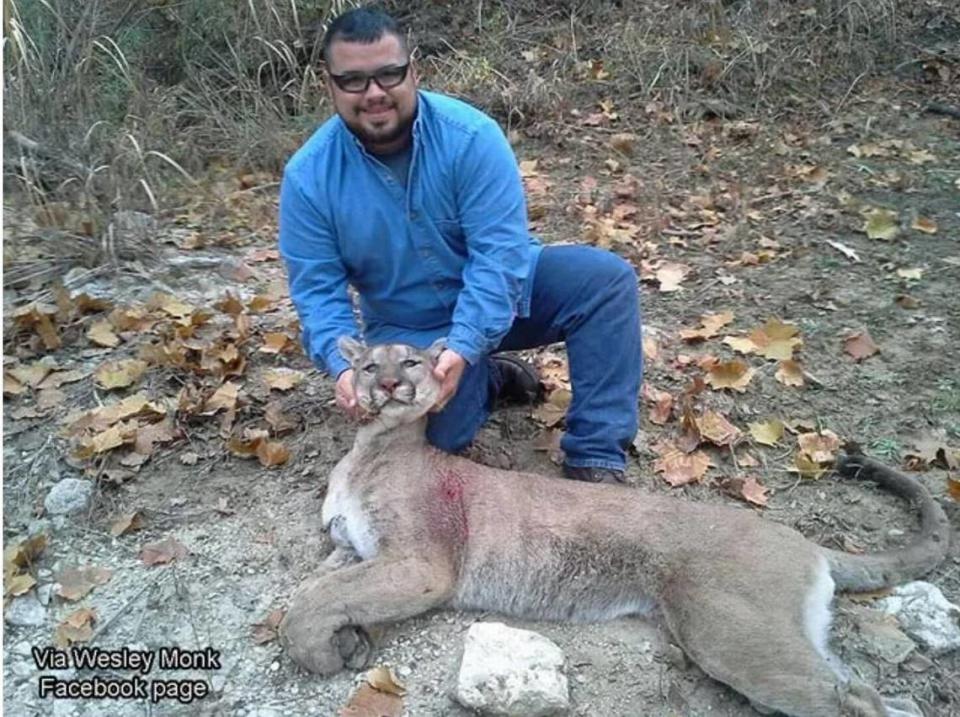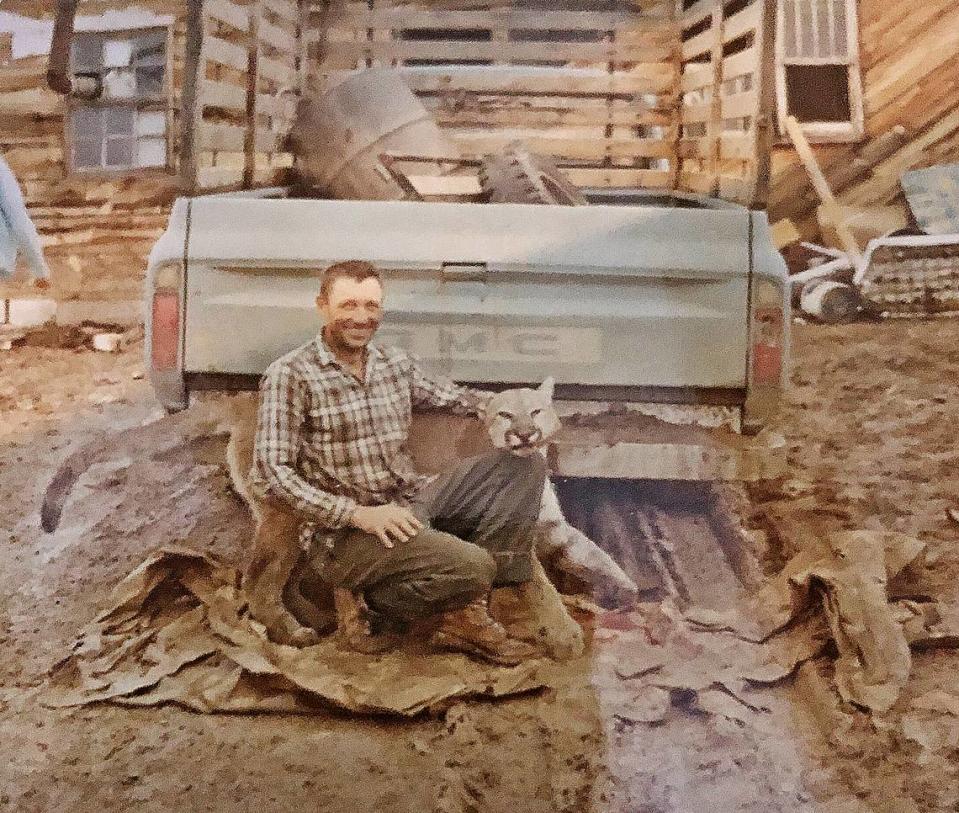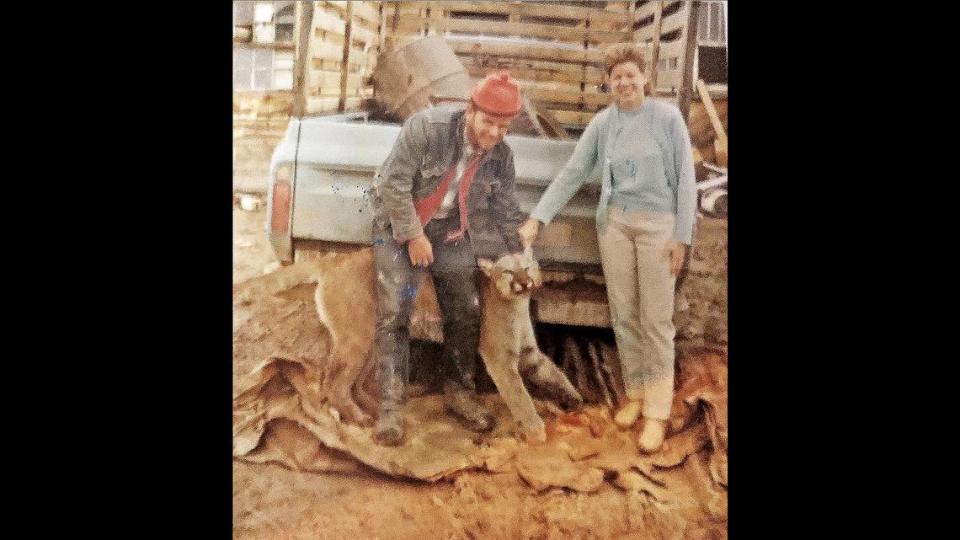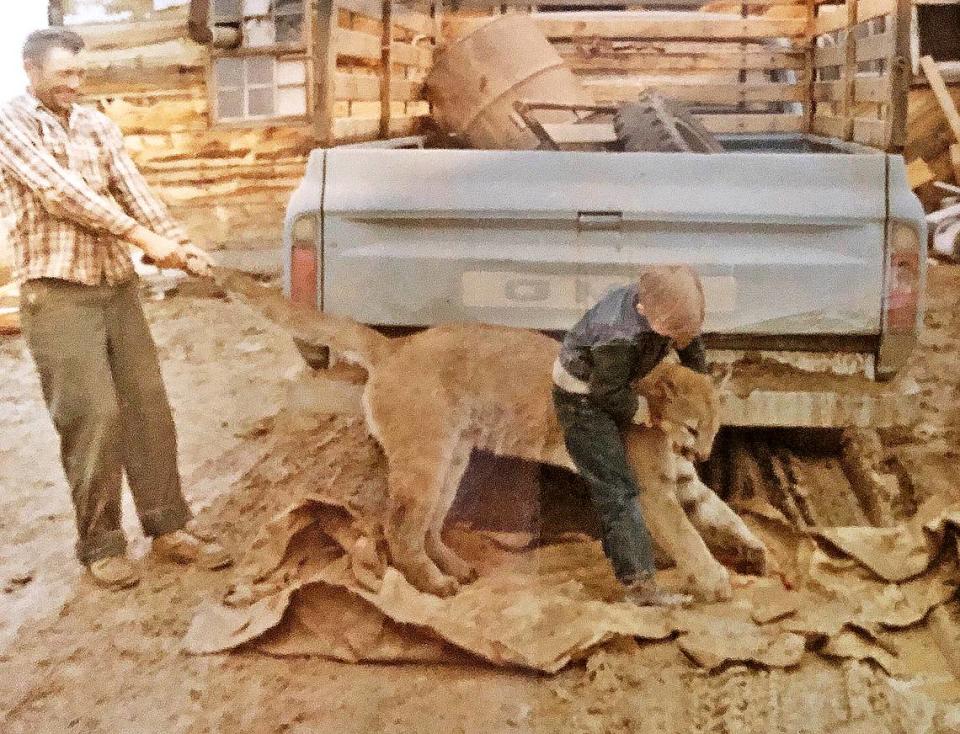Is there truth to a Glen Rose man saying he saw a mountain lion? Here’s what hunters think
Another report of a mountain lion sighting got blood flowing for many in Glen Rose.
This rural hamlet with a rich oil history, a two-hour drive southwest of Fort Worth, have heard its fair share of reported brushes with cougars. Sightings of the big cats do get tongues wagging and fingers tapping smartphone keyboards.
This post on the “Goin’ On In Glen Rose” Facebook page by John Brandon Iness earlier this month ignited another round of speculation. It read: “Anyone who is on CR 302, 313, 313 spur, 313 loop and 328. Beware a Mountain Lion was spotted Saturday night in the area, and I just had a close encounter with it while I was out walking my dog about 15min ago, as it was stalking us from across my house. If you have livestock in the area, keep them safe, be safe if you go out and keep your kids and pets close.”
⚡ More trending stories:
→Are Texas speed traps legal? Here's what the law says.
→What to know about Fort Worth garbage collection during the holidays.
→Here's how Chicago-style hot dogs have taken over Fort Worth.
Is there something to this claim?
Absolutely.
A Stuart Winters wrote in response to the post, “I’ve seen them on the other side of Chalk Mountain jump across the road.”
Then Tanya Hawkes wrote that she has seen one on 67 and at Comanche Peak.
Iness said he was on CR 302 when he saw the big cat.
A skeptical commenter did point out that it could be a bobcat, and many posted pictures of big cats that look like bobcats.
Fair point.
Both the cougar and bobcat share similar physical and behavioral traits. The mountain lion has a long tail (2.5-3 feet), while the bobcat has a short tail (less than 10 inches). Mountain lions are 7 to 9 feet long, while bobcats are around 3 feet long.

The Chalk Mountain cougar: Hunt of a lifetime
But if you’ve read accounts in recent years or seen the photos of Wes Monk showing off his catch on Chalk Mountain, 12 miles southwest of Glen Rose, then you know the big cats roam these parts.
The Glen Rose man said he had scattered corn around the property to bait deer. But the animals seemed to have vanished from the land around Thanksgiving Day of 2014.
“We had seen lots of tracks, and you never know for certain about actual size. I did not see any claw marks, which you probably won’t with a big cat,” Monk told The Flash Today, an online news outfit out of Stephenville. “But, we knew we had something going on with no deer showing up.”
Monk, along with his wife and son, had been noticing animal tracks around the land. They knew some came from coyote and bobcat. But there were more troubling larger tracks.
Could it be a mountain lion, Monk thought.
While sitting up in a hunting blind a few days after Thanksgiving, he catches a shape in the coloring of a whitetail deer — the species he was out to hunt. He started running video on his phone. A murder of crows were making a deafening racket, he recalls.
Then came the tail as the animal sauntered down the trail. It was too long to be a bobcat.
Nervously, he drops his phone.
He was looking at an honest-to-goodness mountain lion.
“I knew without a doubt I was looking at a mountain lion and I had never seen one in the wild,” he told the Stepehenville news website days later. “But I knew this wasn’t a bobcat I was looking at. It was something else.”
North Texas encounters with mountain lions
It may be a different story inside the urban sprawl of the Metroplex. But as baffling as it may have been to many biologists, a trail camera captured a young mountain lion making its way through Rowlett, a community northeast of Dallas, in 2020.
“This was the first confirmed sighting, and the one most of you are probably familiar with,” Chris Jackson wrote on his blog DFW Urban Wildlife.
Texas Parks and Wildlife Department biologists confirmed that the big cat near Dallas was indeed a mountain lion.
“Biologists suspect that this mountain lion is most likely a transient juvenile male that is just passing through the area as it searches for a home range,” the TPWD said in a statement in response to the urban sighting. “This mountain lion will likely move on and never be seen again.”
The animals have extremely large home ranges and are elusive, traveling many miles a week, according to the TPWD.
Back in 2018, a teenager in Mineral Wells struck a mountain lion as the big feline was crossing the road. Imagine that. Driving home from basketball practice and you hit … a cougar?
“I’ve seen a lot of country that no one has ever seen, but I’ve never seen a mountain lion,” Palo Pinto Game Warden Matt Wagoner told WFAA-TV (Channel 8) at the time. “He was a mature male, and he was about 200 pounds. Just Massive.”

How credible are these mountain lion sightings?
Are the sightings credible? It all depends to whom you pose the question of credibility.
Russell Huffman who wrote the story on the hunter who bagged a large mountain lion on private property in the Chalk Mountain area is also an avid hunter, competitive shooter, photographer and journalist.
He also happens to know a little about hunting cougars, and even has his own story about seeing one of the big cats on his property during his 30 years living in rural Stephenville with his animals. He fished, hunted and camped around the plains and lakes near his home. He is now Assistant Editor for the El Defensor Chieftain newspaper in Socorro County, New Mexico, not far from his childhood home.
He is not skeptical of mountain lion sightings. He caught a fleeting glimpse of a big cat himself near his home in Stephenville three years ago. He’s sure of it, he said.
“I saw one go on my county road, just for three seconds, but I mean, I know what a mountain lion looks like and that was definitely a mountain lion,” Huffman told the Star-Telegram.
The big cats are elusive because they tend to hit the trails at night. State biologists say it is rare, but photographic evidence in the past decade clearly confirms they live among us in North Texas.
The big cats can be found from Canada to Argentina. They live in mountainous, semiarid terrain, subtropical and tropical forests, and swamps. Mountain lions are most common where there is abundant prey, rough terrain, and adequate vegetation. They are active year round and have been known to hunt in close proximity to humans, according to a report from the Iowa Department of Natural Resources.
“My first instinct is that most people don’t realize whether they’ve actually seen a mountain lion or not because it happens so quickly,” Huffman said. “Most of the time, when you see a mountain lion, if you’re lucky to see it for longer than three or four seconds, you know, you’ve had what I’d call an A-plus sighting.”


Growing up in ‘a family of Great White hunters’
Huffman said he knows seeing big cats in the wild is rare.
“I come from a family of Great White Hunters because everybody, my uncles, my grandfather, my great grandfather, they all were hunters,” he said. “So I was exposed to the woods. You know, from the time that I was legally and could safely carry a gun.”
Huffman said he is certainly comfortable being outdoors. He watched his father, Jim, hunt for cougars in the mountains near his childhood home in Regina, New Mexico, through the 1960s. He even shared Polaroid pictures of himself with a mountain lion his father harvested in 1969.
“I helped look for lost dogs, but never did go on a hunt,” Huffman said.
He said he remembers a friend of his father, John Simpson, would come down their road in a red pickup truck with hunting dogs in tow. This happened about once a month, he said.
His father loved the hunt, he said.
“(My father) described it as one of the most invigorating and thrilling experiences in this entire life: You know, you’re riding through the woods as fast as you can after these dogs. And you don’t want to lose sight of the dogs simply from the standpoint that if you’re not there and the dogs get into a fight with mountain lion, they’re going to be torn up,” Huffman said. “When you get there and there’s that mountain lion 60 feet up in a tree, and then you have to decide how you’re going to take him. If you shoot (the cougar) and he comes down out of there and he’s not dead. Well, it’s a whole different rodeo.”

Did he ever, or does he still, want to hunt the big cats?
“I’ve just never had the desire to shoot a mountain lion,” he said “I’m envious, you know, from the standpoint of like: ‘Wow, what a story. Yes!’ But to actually go out and kill a mountain lion or a bear. I just don’t think I’d ever do it.”
Yet even as a young child he knew the big cats were out there.
“We live among them,” he said. “It was like that feeling when I was 14 in northern New Mexico and going up through an Indian road and when I came back, there was a large cougar track over my track. That will raise the hair on the back of your neck. Maybe there’s a 100-pound animal that’s been following you.”
He wondered later if that was just a curious animal following him.
“It was an eye opener,” he said.

